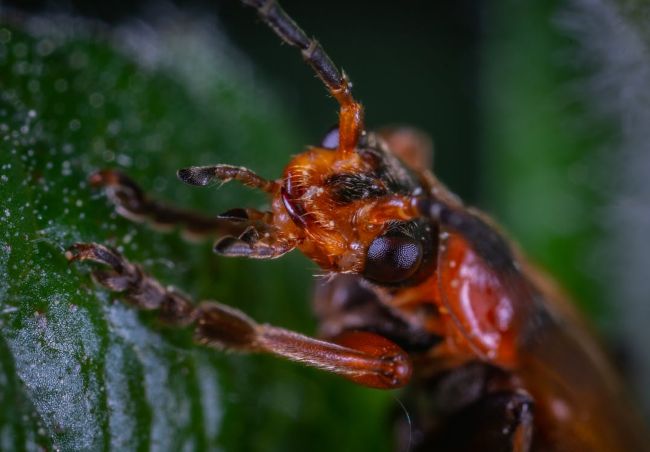Why Your Garden May Be Attracting Pests (and How to Fix It)

A healthy garden is every homeowner’s dream—lush leaves, colorful blooms, and maybe even a few ripe tomatoes for bragging rights. But sometimes, the very things we do to encourage growth can also roll out the red carpet for pests. Yes, even the compost bin you’re so proud of could be throwing a party for ants, roaches, or worse.
If you’re living in a place like Anthem, Arizona, where dry heat meets sudden monsoon rains, pest problems can sneak in through the garden gate without much warning. That’s where understanding the small things—watering habits, mulch piles, plant density—can make a big difference. And if it gets beyond what your spade and hose can handle, professional Anthem pest control services are always a smart next step.
Let’s break down the most common garden mistakes that attract pests—and how to fix them without compromising your backyard bliss.
1. Overwatering: When Too Much Love Backfires
It’s tempting to water your garden a little extra, especially during Anthem’s hottest months. But moist soil and standing water are a five-star hotel for pests like mosquitoes, termites, and fungus gnats.
The Fix:
- Water early in the morning to give soil time to dry before dusk.
- Check irrigation systems for leaks—slow drips near your home’s foundation are an open invitation for ants and roaches.
- Use mulch sparingly around plant bases. Too much mulch traps moisture, especially in shaded spots.
2. Dense Planting Means Cozy Pest Hideouts
Thick, lush plant beds look great, but they also provide ideal cover for pests. Rodents, spiders, and beetles love dense foliage, especially near walls, fences, or under decks.
The Fix:
- Keep at least 6–12 inches of clearance between shrubs and your home’s foundation.
- Prune back overgrown plants regularly to increase air flow and reduce dark, damp hiding places.
- Space out new plantings to avoid unnecessary crowding as they mature.
3. Compost the Right Way—or Not at All
Composting is great for soil health, but if it’s not done correctly, it becomes a buffet for flies, rats, and raccoons.
The Fix:
- Never add meat, dairy, or oily foods to your compost bin.
- Use a sealed, rodent-resistant compost tumbler if possible.
- Keep the bin as far away from your home as possible, and turn it regularly to discourage nesting.
4. Decorative Rocks and Pavers = Scorpion Hangouts
Desert landscaping often includes beautiful rocks, gravel beds, or paver walkways—but these can be perfect shelter zones for scorpions and other critters that prefer tight, shaded crevices.
The Fix:
- Rake out gravel beds regularly to disturb hiding places.
- Avoid stacking flat rocks in areas where you walk or garden barefoot.
- Consider using pest-repelling plants like lavender or rosemary around these areas—they won’t solve the problem completely, but they may help.
5. Fruit Trees and Feeders Can Attract the Wrong Guests
That orange tree you love? It’s also on the rat’s top ten list. Bird feeders, too, can attract squirrels, ants, and even roof rats—especially when seeds spill or rot on the ground.
The Fix:
- Harvest fruit promptly and clean up fallen produce daily.
- Use tray-style bird feeders that catch dropped seeds.
- Consider taking bird feeders down during peak pest seasons (especially spring and fall).
6. Yard Clutter Isn’t Just Ugly—It’s Risky
Stacks of firewood, old pots, unused garden tools, and kids’ toys can all become cozy hiding spots for pests like black widows, snakes, and termites.
The Fix:
- Store firewood at least 20 feet away from the home and 5 inches off the ground.
- Declutter garden spaces and keep storage bins sealed.
- Shake out gloves, boots, and tools before using them—especially if they’ve been sitting outside.
7. Outdoor Lighting Can Lure Bugs (and Their Predators)
We all love a twinkly patio, but bright lights attract flying insects—which, in turn, attract spiders, geckos, and even bats. It’s the circle of life… just not the version you want hovering around your barbecue.
The Fix:
- Use yellow “bug light” bulbs in outdoor fixtures.
- Install motion sensors so lights turn on only when needed.
- Avoid placing lights too close to doorways or windows.
8. Unkept Lawns Invite Burrowing Pests
Even if you’re not aiming for a golf-course-level lawn, letting your grass grow too tall or patchy can encourage ground-dwelling pests like gophers, moles, and snakes.
The Fix:
- Mow regularly and edge along fence lines and pathways.
- Fill in low spots and holes quickly to prevent animals from burrowing.
- Keep an eye out for tunneling activity—raised soil or dying patches could be a clue.
When to Call in the Pros
Sometimes, even the most careful gardeners find themselves in over their heads. If you spot pests during the day, hear rustling at night, or see droppings or damage around your property, it might be time to bring in the professionals.
Certain pests—like scorpions, roof rats, or termite swarms—require more than just traps or sprays. They need targeted treatment and preventative strategies that only trained experts can offer. Pest control companies in Anthem are well-versed in local species and environmental factors, making them your best bet for a long-term solution.
How to Pest-Proof Without Losing Your Garden Vibe
You don’t have to sacrifice your garden’s beauty to make it pest-resistant. In fact, many solutions blend seamlessly into your outdoor space.
Here are a few bonus ideas:
- Install gravel barriers around flower beds to deter ants.
- Swap out pest-prone plants (like sweet alyssum) for hardy alternatives like marigolds or mint.
- Use cedar mulch instead of straw or bark—it’s naturally pest-resistant.
- Add vertical planters to keep plants off the ground and away from critters.
Plant pest-repelling herbs like basil, lemongrass, and chives around entryways and patios.


